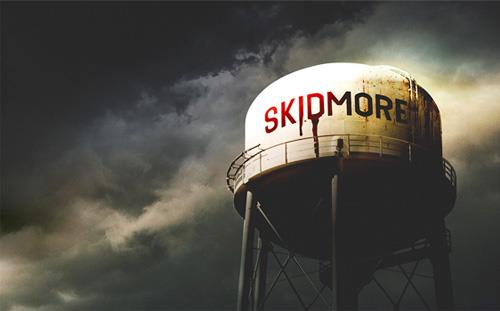
There’s an unsettling parallel between Big Little Lies, the HBO drama that just wrapped up its second season, and No One Saw a Thing, a new Sundance documentary about a murder in a small Missouri town 38 years ago.
No One Saw a Thing, a six-part series that premieres Thursday at 11 p.m. ET on Sundance, revisits the 1971 death of Kenneth Rex McElroy, who at the time was sitting in the driver’s seat of his pickup truck on the main street of Skidmore, Mo.
With his wife Trena beside him in the passenger seat, McElroy was surrounded by a crowd of maybe a dozen people. Or maybe five dozen. A lot of the facts aren’t clear. One fact is: Someone fired a gunshot through the back of McElroy’s head, propelling much of his brain onto the windshield
It’s known that he died with his foot jammed on the accelerator, which soon caused the engine to blow. It’s known that someone escorted Trena, who was sure she’d be next, to safety.
Most of the rest remains a secret. Who fired the fatal shot? Or other shots? Don’t know. Never been found. No one around the McElroy truck that day has ever identified a shooter.
No one saw a thing.
If it seems extraordinary that in almost four decades no one would have pointed a single finger, there is a reason.
Pretty much everyone in town, with the exception of Trena McElroy, was happy Kenneth Rex was dead.
Hundreds of articles, books, TV specials and investigations all came to the conclusion reported by this documentary series: Kenneth Rex McElroy was the bully of the town, a bad dude who for years had made Skidmore an unpleasant place for many people to live.
He stole, he raped, he shot people. Mostly he intimidated. If he had a grudge against someone, he would park his car outside that person’s house and silently let them know he was watching. Since it was also known he was not shy about using a knife and his guns, the targets felt threatened 24/7.
Skidmore had fewer than 500 residents, but it was a successful small town, with businesses and farms. What it also had, this documentary emphasizes, were all the characteristics of a small town, including knowing everyone’s business and sticking together.
So when widespread opinion about McElroy finally coalesced, the documentary suggests, “citizen justice” was just the next, albeit extreme, step.
Once the story spread beyond Skidmore, residents rapidly got sick of outside reporters and TV crews coming in to express shock at this vigilante drama and the code of silence that insulated it.
All these years later, then, only a select group remains willing to speak, or alive to speak, and the documentary relies often on vintage film.
But the bottom line has remained remarkably consistent over the years. Trena McElroy says someone got away with murder. Most of the rest of the town says Kenneth reaped what he sowed.
At least one interviewee says he knows what happened and who did what. He’s not about to reveal either. He just smiles, as if to suggest the way it ended was the way it needed to end. Justice at work. Rough justice, frontier justice, but justice nonetheless.
What sets No One Saw a Thing apart from previous examinations of the case is that it doesn’t stop with the murder and the code of silence.
Like Big Little Lies, it suggests that this sort of cover-up has a corrosive aftereffect. Even when the price of the truth is higher than anyone seems willing to pay, there’s also a cost to a cover-up.
Skidmore’s population today has dwindled by about half. The main street is deserted. It looks like a small town that has crumbled, and while that’s a sadly familiar story with small towns all over America, No One Saw a Thing strongly suggests that Kenneth Rex McElroy’s death ate away some of the core fiber of Skidmore.
In some intangible way it poisoned the air and took away some of the town’s life.
Americans have always had a certain ambivalence about street justice. We reject it in theory, yet in specific circumstances we applaud it.
No One Saw a Thing captures that duality, without taking a side. Unlike with Big Little Lies, we’re not looking at movie stars. We’re looking at Midwestern farmers in overalls. We’re looking at the death of a real-life person, and hearing a matter-of-fact description of how someone picked up his teeth from the pavement beside his vehicle.
It seems pretty clear that not many people miss Kenneth Rex McElroy. Beyond that, in Skidmore, “clear” seems like a luxury.